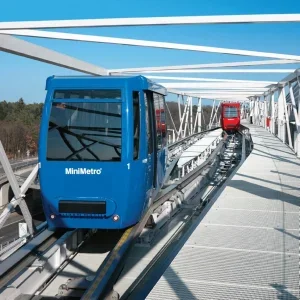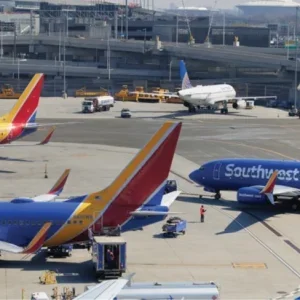Singapore’s Changi Airport is the world’s seventh busiest for international traffic, handling 6,800 flights a week and serving a record 55.4 million passengers in 2015. And those numbers are set to grow rapidly. The new Terminal 4 will open next year, taking capacity to 82 million. The giant Jewel Changi Airport development, combining retail space and a hotel with airport operations, is expected to open in 2018, adjacent to Terminal 1. A third runway will arrive in 2020, and plans for a fifth terminal (Changi East) were announced in 2013 that would alone nearly double the airport’s footprint. These will further boost Changi’s annual passenger capacity to a mammoth 135 million by 2025.
To help make this quantum leap a successful one, Changi Airport Group (CAG) is investing considerable time, effort and budget in deploying passenger self-service facilities under its Fast and Seamless Travel (FAST@Changi) programme.
Self-service in Singapore
With manpower expensive and hard to come by in space-constrained Singapore, introducing more self-check-in kiosks and automated bag-drop machines reduces manual processing work, boosting staff output and cutting costs. It also frees up time for check-in agents to deliver better service to passengers – something Changi is already well known for around the world.
“The roll-out of self-service options is part of a suite of FAST initiatives that Changi Airport is progressively introducing to cater to passenger traffic growth,” says Jayson Goh, managing director, airport operations management, CAG. “The adoption of FAST initiatives is also in line with a wider global push towards self-service options at airports to improve productivity and efficiency while providing passengers with more options, greater flexibility and increased convenience.”
FAST aligns with IATA’s Fast Travel programme, the industry body’s drive for passenger self-service that has set ambitious worldwide goals and standards. IATA wants 40% of passengers to have a self-service option by the end of this year, with a target of 80% by 2020.
Changi has a record of innovation here, including a groundbreaking six-month trial of biometric-based identity checking in 2004. Frequent travellers on the Singapore Airlines (SIA) KrisFlyer programme used a microchip card holding their facial features and fingerprint details, with check-in and immigration combined at a single kiosk.
Singapore’s enhanced Immigration Automated Clearance System (eIACS) has also been operational at Changi since 2006. This employs biometric passports and fingerprint identity validation to speed up immigration checks for eligible passengers. The entire suite of FAST options at Changi now comprises self-service check-in and bag drop, automated immigration clearance and self-boarding gates.
“By partially automating these conventional airport processes that can be manpower intensive, FAST allows Changi Airport and its partners to optimise manpower resources while continuing to deliver a first-class Changi experience to passengers,” says Goh.
Streamlined passenger flow
CAG started running pilot programmes with Jetstar Asia in early 2014, with two self-service bag-drop units and four self-check-in kiosks alongside conventional check-in counters at Terminal 1. Passengers checking bags print their boarding passes and bag tags at the kiosk, apply the tags and then head to a bag-drop desk. Hand-luggage-only passengers simply check-in at the kiosks, print their boarding passes, then walk straight to departure immigration. Videos and signs demonstrate how to use the facilities, with ground staff on hand for extra support.
Next came Tigerair, with four self-check-in stands at Terminal 2 in April 2014. The airline estimated that around 30% of its passengers would immediately benefit from the new facilities. The roll-out gathered pace mid-2015, with 24 self-service check-in and bag-tagging facilities going live for SIA and SilkAir passengers at Terminal 2. A further 24 followed for the same airlines at Terminal 3 later that year.
“A total of 108 self-check-in kiosks are now offered by 14 airlines in Changi’s three terminals,” explains Goh. “Those airlines include AirFrance-KLM, AirAsia Group, Cathay Pacific, Delta Air Lines, Jetstar Group, Qantas, Singapore Airlines, SilkAir and United Airlines.”
Goh adds that Jetstar and Qantas also use self-service bag-drop machines with a total of 13 units employed by
both airlines. “British Airways, Lufthansa and Emirates all use self-boarding gates,” he says.
Star incentives
FAST@Changi has been supported from the start by the Civil Aviation Authority of Singapore’s (CAAS’s) Passenger Self-Service Adoption Programme (PSAP), launched in 2013 as part of CAAS’s Airport Productivity scheme.
“This encompasses various programmes to accelerate the development and implementation of initiatives for raising labour productivity at Changi Airport,” says Goh. “To encourage airlines to adopt the self-service options, CAAS provides incentives under PSAP to offset some of the implementation costs that airlines will incur.”
Bankrolled by Singapore’s $80.2-million Aviation Development Fund, the PSAP had a budget of $1.47 million to spend by early 2015. That helped defray costs such as software development, consultancy services, equipment purchase or lease, and the building of online and mobile check-in applications.
“With the implementation of these FAST initiatives, we have seen faster passenger processing through self-service options,” says Goh. “Passengers surveyed have also expressed satisfaction with the self-service options, with more than 90% of them indicating that they would be keen to use the options again the next time they travel.”
Boost to biometrics
Moving forward, CAG plans to partner more airlines to extend the FAST initiatives. The deployment of automated bag-drop facilities continues, with ICM Airport Technics recently picked to supply its Hybrid Auto Bag Drop solution. This can be used as a self-service machine or a traditional check-in counter.
“When Terminal 4 opens in 2017, passengers can expect to use the complete suite of self-service and automated options, from check-in and bag drop to immigration clearance and boarding,” says Goh.
Terminal 4’s FAST options will extend well beyond bag drop and self-tagging. Notably, that includes extensive use of biometrics – specifically, facial recognition, marking the first ever full-scale implementation of this technology for international flights.
“For the first time at Changi Airport, facial recognition technology will be introduced at Terminal 4 to enhance the security features of FAST,” says Goh. “This eliminates the need for manual identity verification by staff and enables the full automation of processing and checks from departure check-in to aircraft boarding, while meeting international airport security requirements.”
Morpho will supply the complete solution, based on its MorphoPass Biometric Applicant Management System and MorphoWay automated gates. CAAS is again supporting this initiative and further self-service enhancements, having announced in July that its FAST Fund will invest $15 million over the next four years.
“Passengers can expect passage through the various touchpoints to be smoother and stress free, giving them more time to enjoy the facilities, including an array of shopping and dining options,” says Goh.
Bright future
CAAS also has its ongoing Aviation Problem-Based Challenge programme, which aims to develop innovative ways to further increase productivity and reduce costs at Changi. The first targets were to develop solutions for baggage and cargo handling on narrow-body aircraft – still a highly labour-intensive affair. A budget of $7 million will fund the eight short-listed proposals selected last year, which incorporate technologies like robotics and exoskeletons. The winning concepts will receive cash prizes of $367,000 and additional support for implementation.
Like many other airlines and airports, CAG is also exploring the concept of a biometric-based single passenger token that echoes its earlier biometrics trial. KLM’s ongoing two-year Happy Flow pilot programme at Aruba Airport is probably the best known current example. In a token system, a photo of the passenger’s face is taken at a self-service check-in kiosk; this image is then used for the subsequent bag-drop, immigration and boarding stages. Instead of presenting documents, the passenger simply stands in front of a camera, which recognises their face, checks the associated identity data and then grants approval to continue on the journey – all in a matter of seconds.
Changi has also trialled wearable technology like smart watches, but there are no current plans for their implementation. Their most likely application lies in augmenting mobile apps, messaging passengers about flight statuses, guiding them around the airport and alerting them to events or promotions based on their location in a terminal.
Most Asian airports are far behind Changi in self-service infrastructure. Overall, only 20% of passengers have access to such facilities, compared with 46% in the US and a global average of 30%. Vinoop Goel, IATA’s regional director for airports, passengers, cargo and security, recently criticised the region for its performance in the Straits Times, saying that “major hubs such as Bangkok, Manila and Jakarta have not come up with a definite master plan”.
Changi provides a valuable best-practice lead here: more than half of self-service pioneer Jetstar Asia’s passengers already take up automated options. Yet, even as the push for automation further intensifies, Changi will retain its manned counters, with staff always on hand to provide support.
With its planned 135-million annual capacity, Singapore may still not be able to match giant future developments like Istanbul (150 million passengers) or Dubai’s $32-billion expansion of Al Maktoum (over 240 million). But it’s a safe bet that those travelling through Changi in 2025 will have an even better customer experience than they do today.






